Abstract
1. Tris 10mM, produced inhibition of motor responses to adrenergic motor nerve stimulation in all smooth muscles studied (rat anococcygeus and vas deferens perfused rabbit ear artery). Up to 30 mM Tris was without significant effect on those motor responses to cholinergic nerve stimulation examined (guinea-pig ileum). 2. a similar reduction in responses to endogenous motor agonists was seen only in the anococcygeus, while in the rabbit ear artery, responses to noradrenaline (NA) were potentiated. 3. tris consistently produced increased tone in the rat anococcygeus and rabbit aorta, but in no other tissue, Small reductions in tone were seen with Tris in spiral strips of rabbit ear artery. 4. inhibitory responses to adrenergic nerve stimulation and to NA in the rabbit jejunum and to inhibitory nerve stimulation in the rat anococcygeus were unaffected by Tris. 5. in the perfused rabbit heart Tris produced a negative inotropic effect and reduced responses to vagal stimulation. Responses to sympathetic nerve stimulation and to ACh and NA were not significantly altered. 6. up to 40 mM Tris had little effect on responses of the rat diaphragm to motor nerve stimulation. 7. the effects of Tris on the rat anococcygeus were not reduced by increased calcium levels but were reduced at lower incubation temperatures. The negative inotropic effect of Tris on the rabbit heart was also reduced at lower temperatures. 8. the buffer HEPES produced a reduction in responses to stimulation in the rat anococcygeus and vas deferens along, but at higher concentrations than those of Tris. Increases in tone in the anococcygeus and aorta were never seen with HEPES. 9. These results indicate that Tris in concentrations commonly used as a buffer in physiological salines can exert toxic effects on neuro-muscular transmission in smooth and cardiac muscle though not in skeletal muscle. The effects are variable, mainly presynaptic and appear to affect in particular motor and especially adrenergic transmission. They may be associated with intracellular metabolic actions of Tris.
Full text
PDF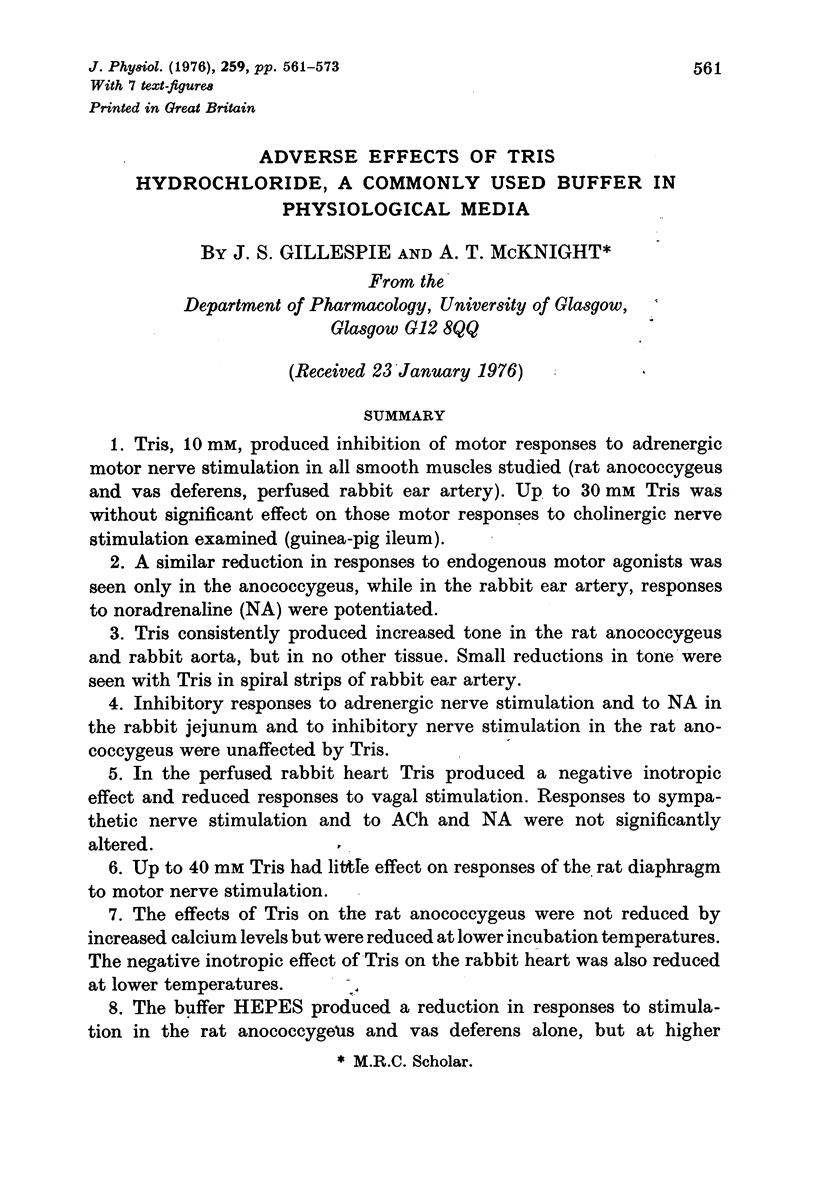
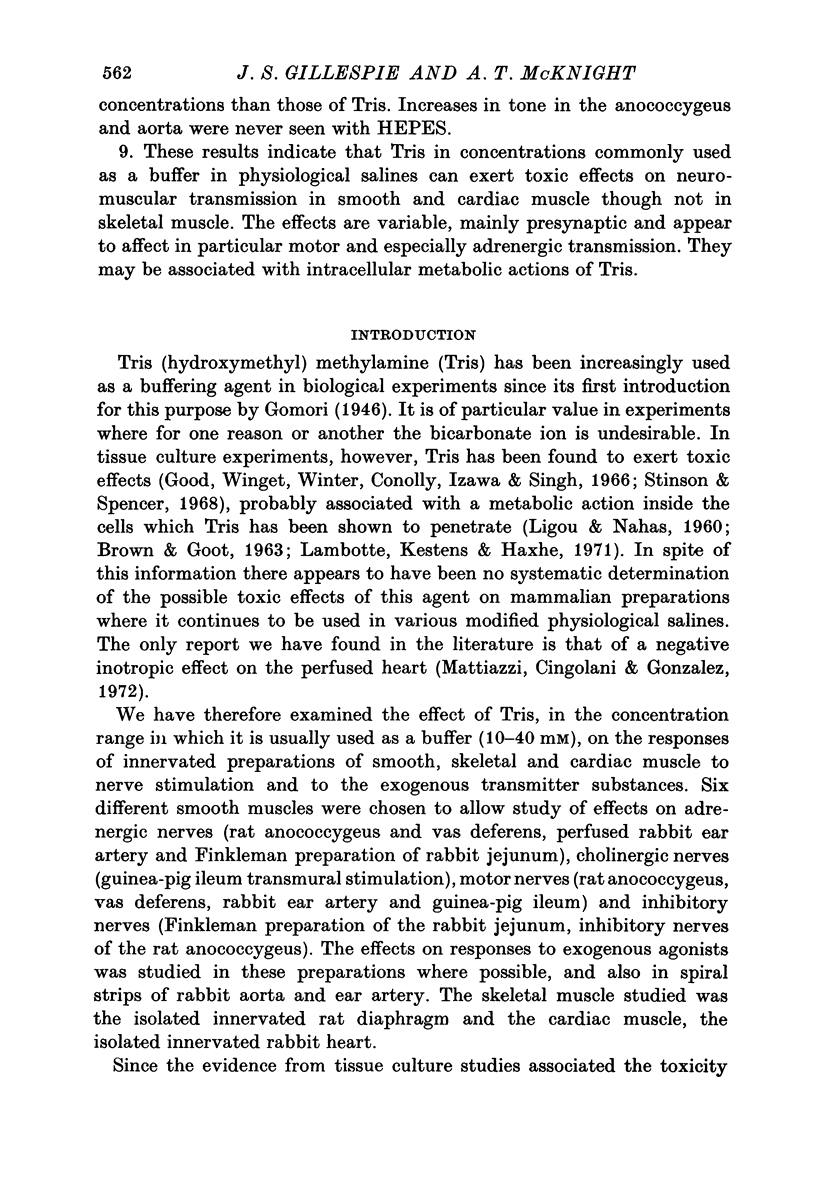
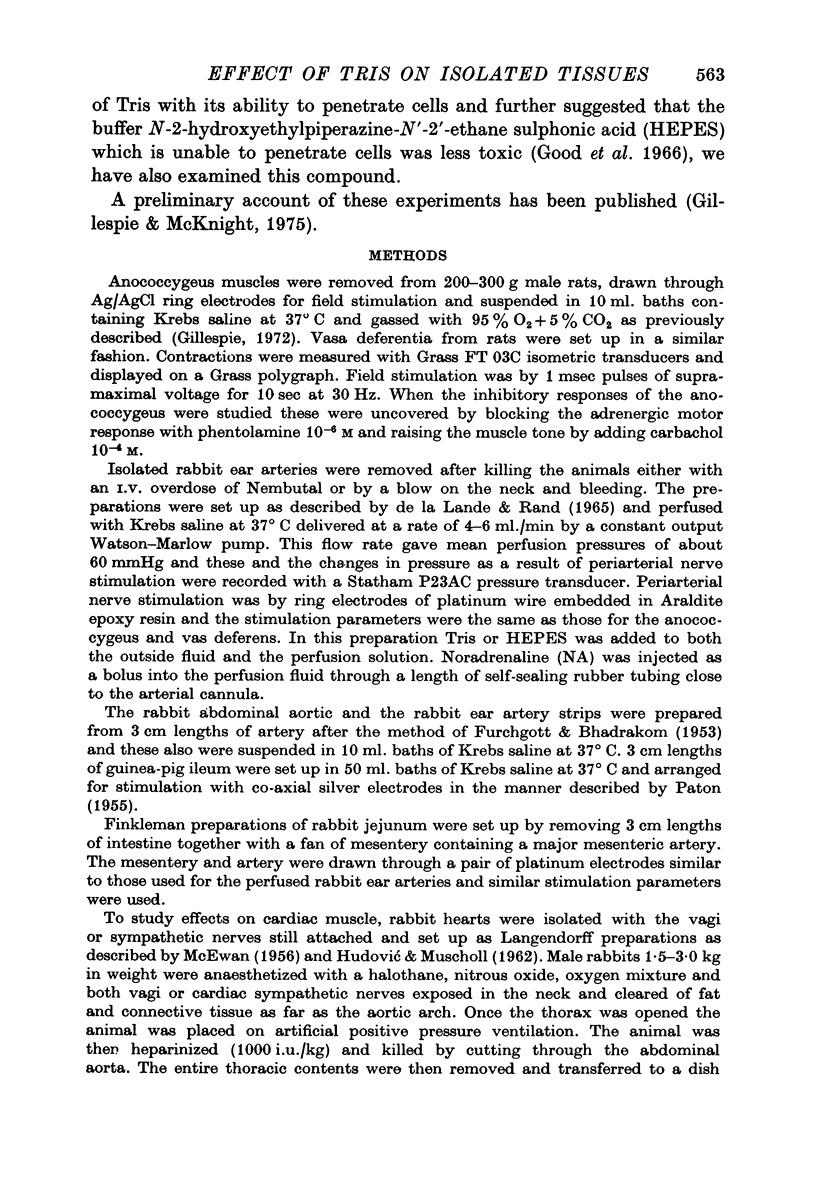
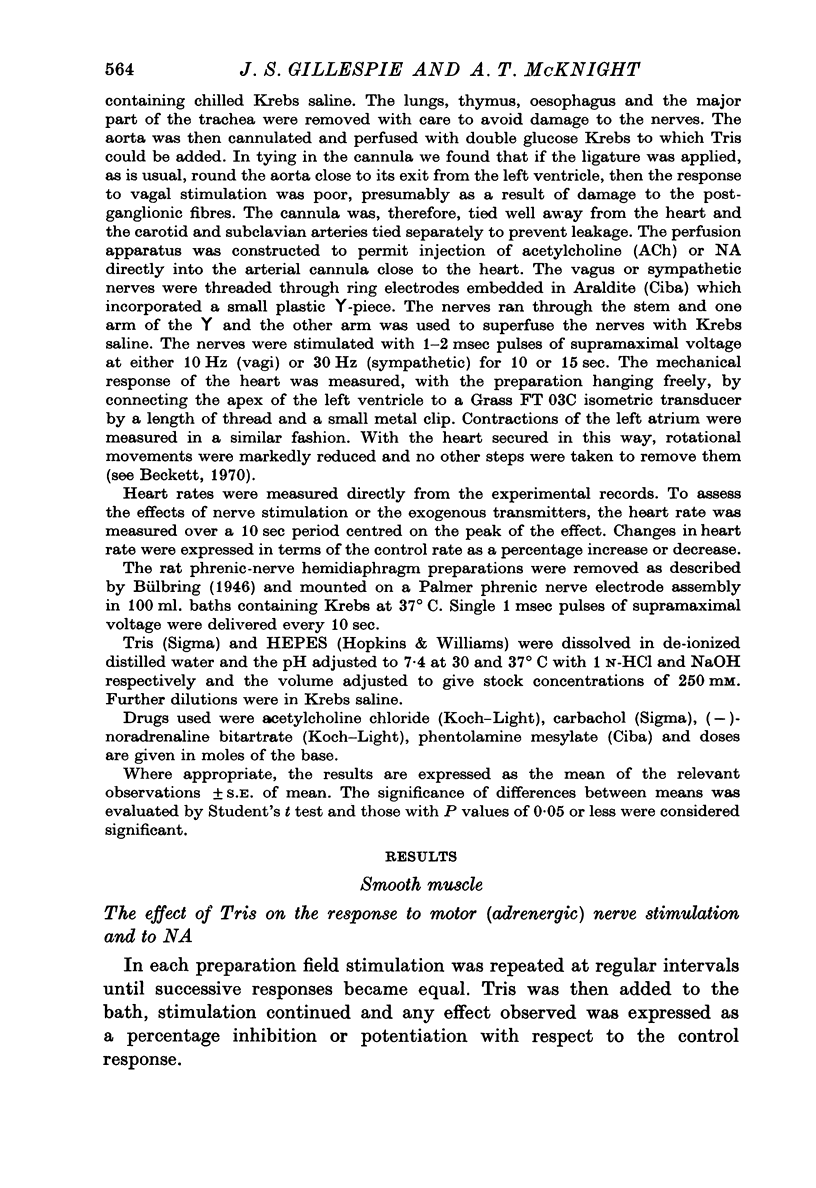
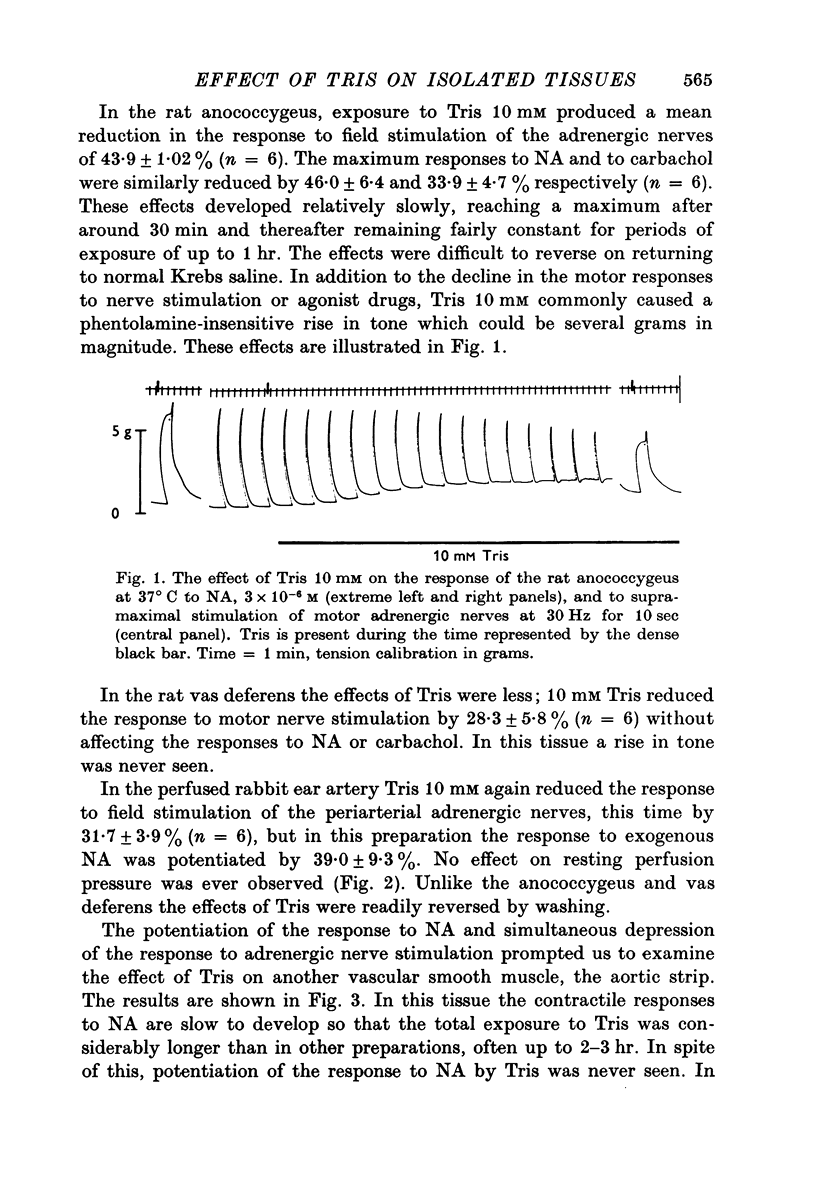
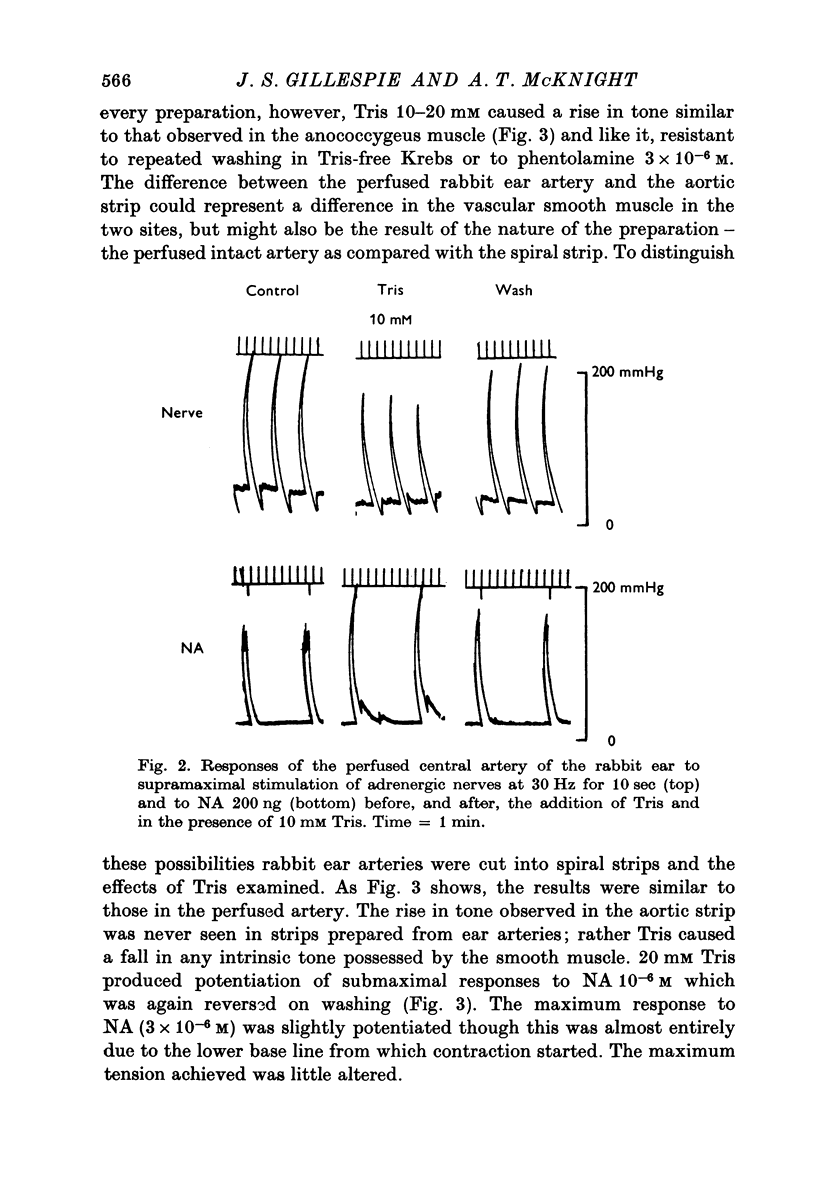

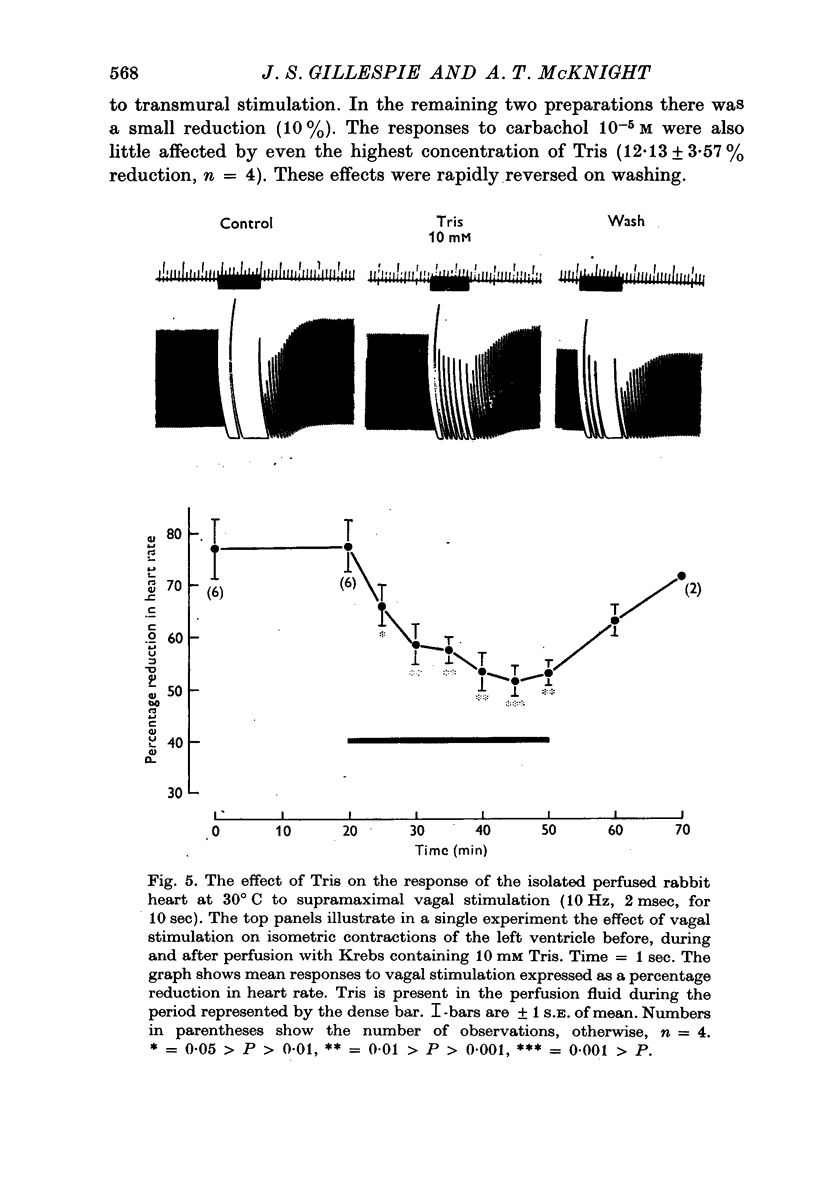
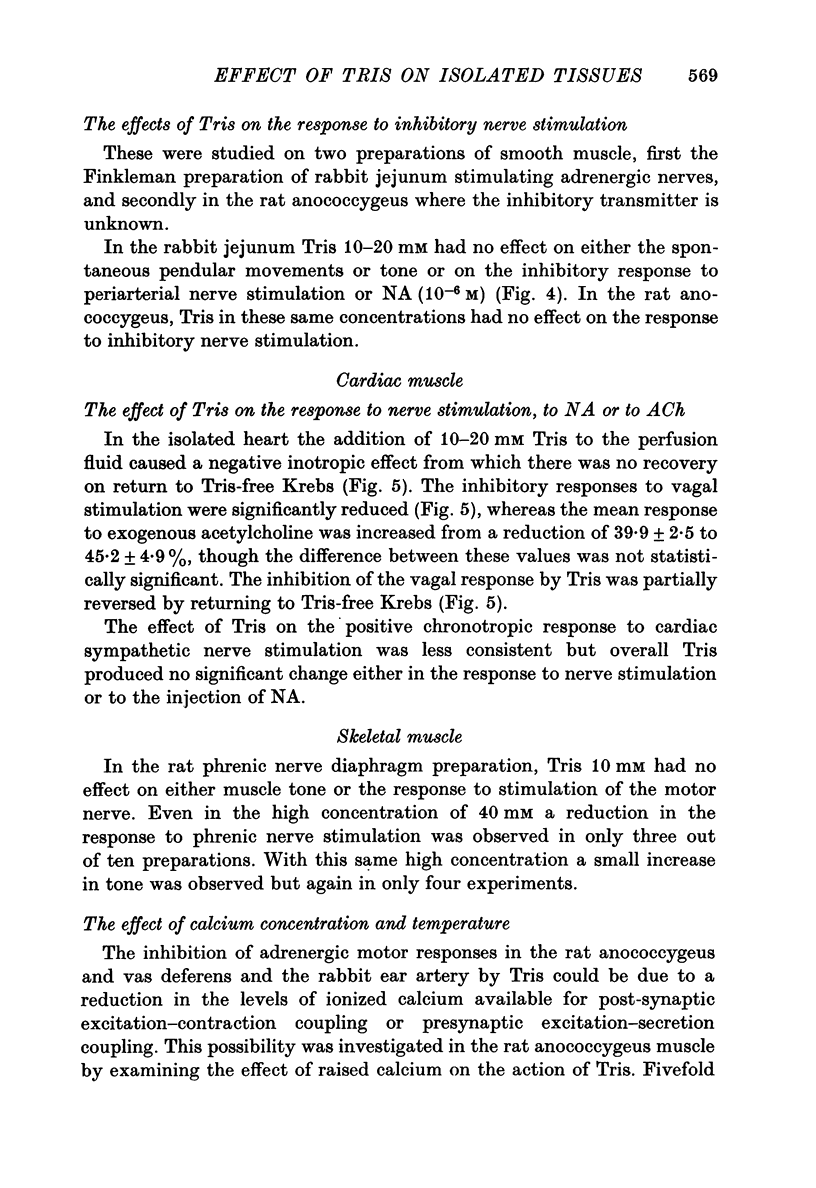
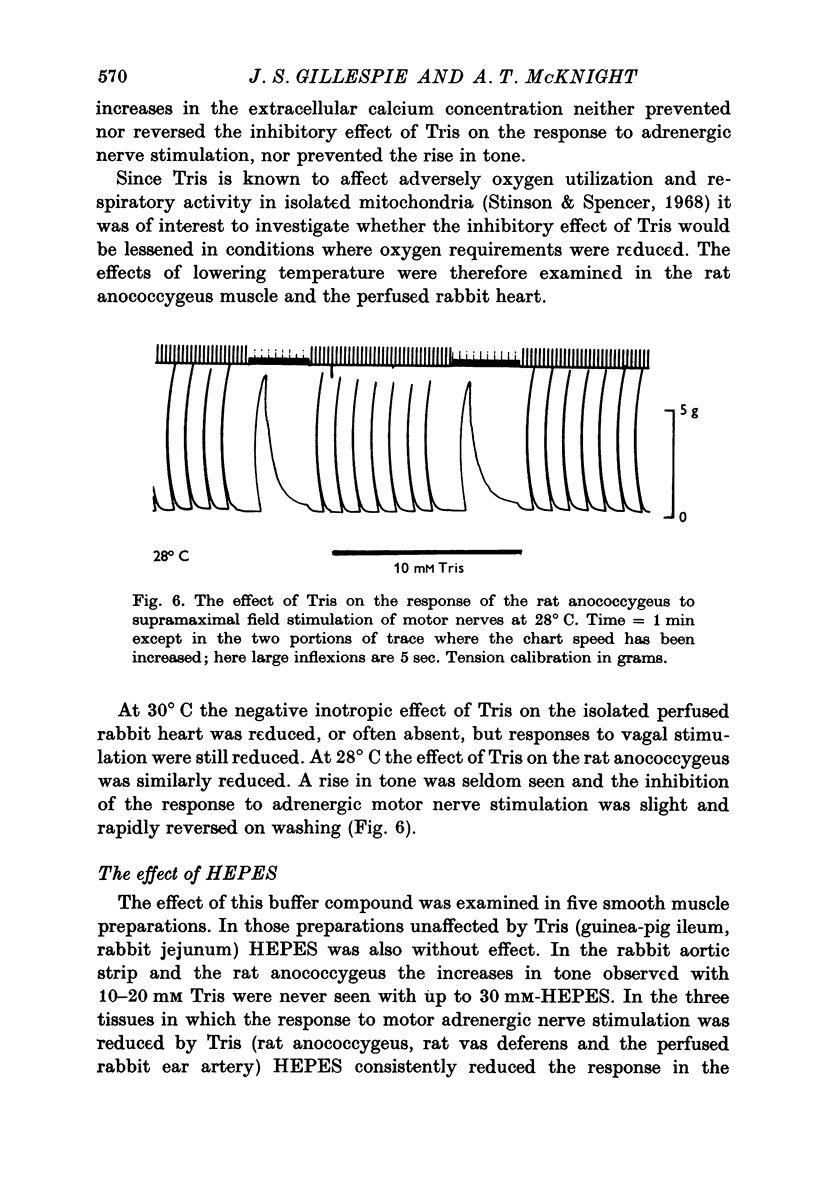
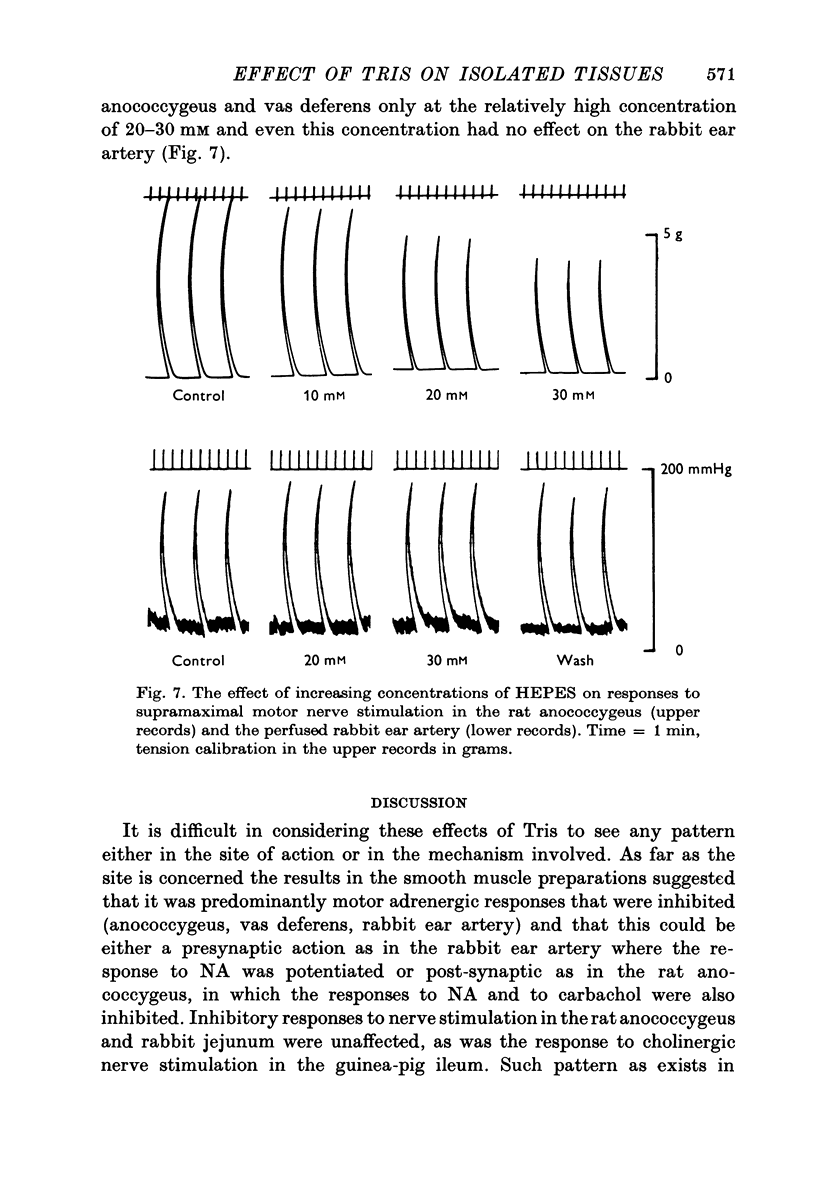
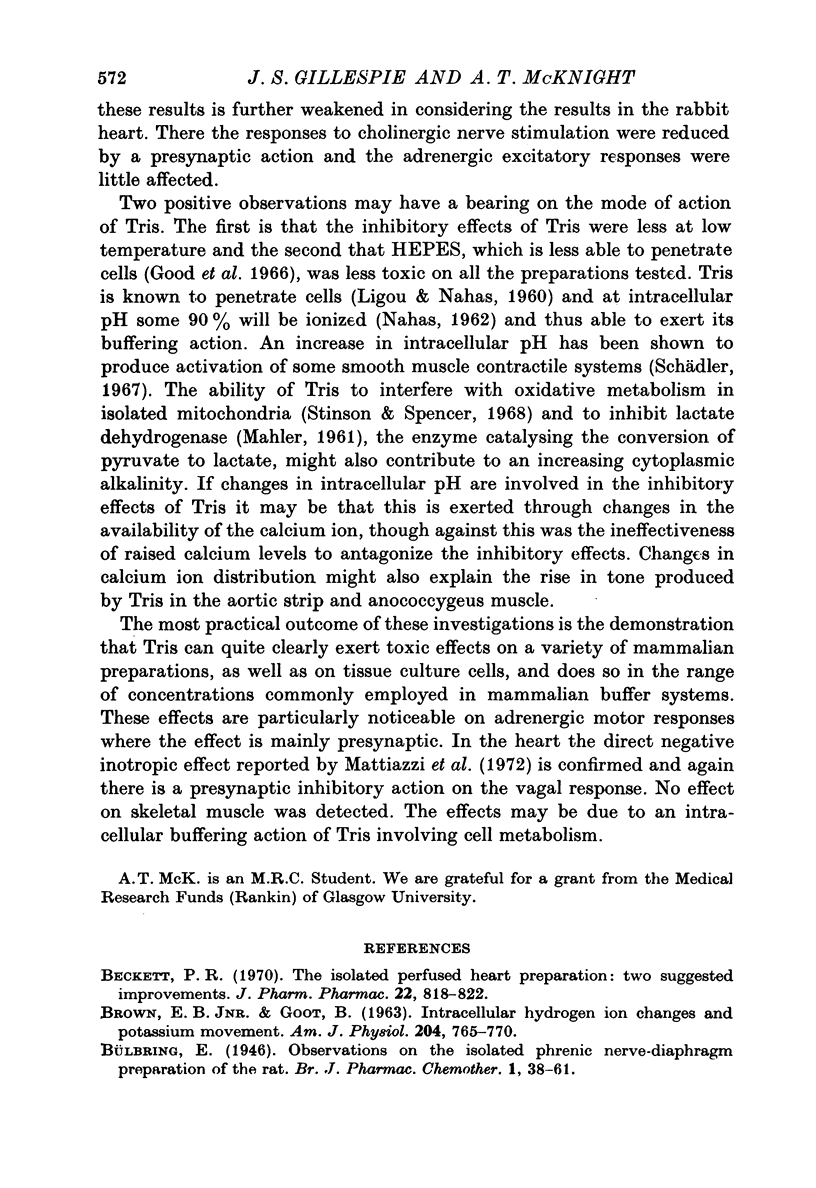
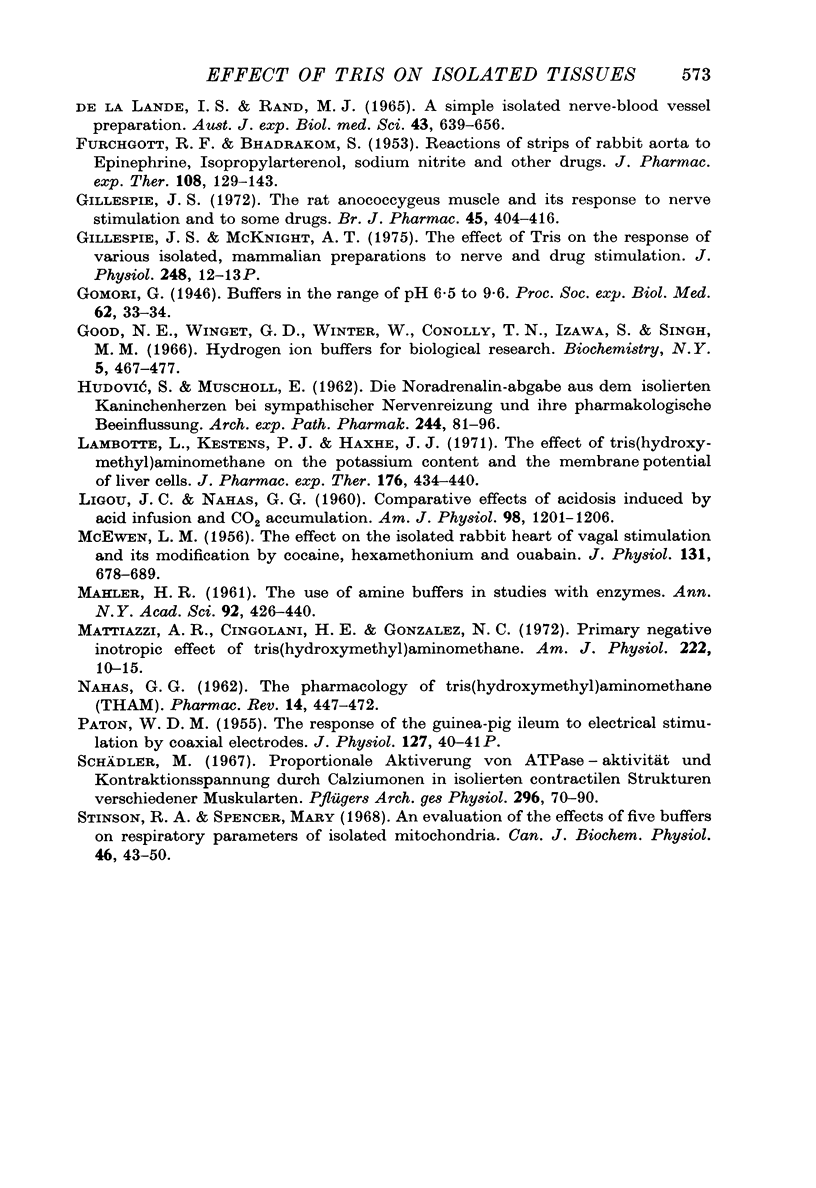
Selected References
These references are in PubMed. This may not be the complete list of references from this article.
- BROWN E. B., Jr, GOOTT B. Intrcellular hydrogen ion changes and potassium movement. Am J Physiol. 1963 May;204:765–770. doi: 10.1152/ajplegacy.1963.204.5.765. [DOI] [PubMed] [Google Scholar]
- Beckett P. R. The isolated perfused heart preparation: two suggested improvements. J Pharm Pharmacol. 1970 Nov;22(11):818–822. doi: 10.1111/j.2042-7158.1970.tb08445.x. [DOI] [PubMed] [Google Scholar]
- De la Lande I. S., Rand M. J. A simple isolated nerve-blood vessel preparation. Aust J Exp Biol Med Sci. 1965 Oct;43(5):639–656. doi: 10.1038/icb.1965.48. [DOI] [PubMed] [Google Scholar]
- FURCHGOTT R. F., BHADRAKOM S. Reactions of strips of rabbit aorta to epinephrine, isopropylarterenol, sodium nitrite and other drugs. J Pharmacol Exp Ther. 1953 Jun;108(2):129–143. [PubMed] [Google Scholar]
- Gillespie J. S., McKnight A. T. Proceedings: The effect of Tris on the response of various isolated, mammalian preparations to nerve and drug stimulation. J Physiol. 1975 Jun;248(1):12P–13P. [PubMed] [Google Scholar]
- Gillespie J. S. The rat anococcygeus muscle and its response to nerve stimulation and to some drugs. Br J Pharmacol. 1972 Jul;45(3):404–416. doi: 10.1111/j.1476-5381.1972.tb08097.x. [DOI] [PMC free article] [PubMed] [Google Scholar]
- Good N. E., Winget G. D., Winter W., Connolly T. N., Izawa S., Singh R. M. Hydrogen ion buffers for biological research. Biochemistry. 1966 Feb;5(2):467–477. doi: 10.1021/bi00866a011. [DOI] [PubMed] [Google Scholar]
- LIGOU J. C., NAHAS G. G. Comparative effects of acidosis induced by acid infusion and carbon dioxide accumulation. Am J Physiol. 1960 Jun;198:1201–1206. doi: 10.1152/ajplegacy.1960.198.6.1201. [DOI] [PubMed] [Google Scholar]
- Lambotte L., Kestens P. J., Haxhe J. J. The effect of tris(hydroxymethyl) aminomethane on the potassium content and the membrane potential of liver cells. J Pharmacol Exp Ther. 1971 Feb;176(2):434–440. [PubMed] [Google Scholar]
- MAHLER H. R. The use of amine buffers in studies with enzymes. Ann N Y Acad Sci. 1961 Jun 17;92:426–439. doi: 10.1111/j.1749-6632.1961.tb44992.x. [DOI] [PubMed] [Google Scholar]
- MCEWEN L. M. The effect on the isolated rabbit heart of vagal stimulation and its modification by cocaine, hexamethonium and ouabain. J Physiol. 1956 Mar 28;131(3):678–689. doi: 10.1113/jphysiol.1956.sp005493. [DOI] [PMC free article] [PubMed] [Google Scholar]
- Mattiazzi A. R., Cingolani H. E., Gonzalez N. C. Primary negative inotropic effect of tris(hydroxymethyl)aminomethane. Am J Physiol. 1972 Jan;222(1):10–15. doi: 10.1152/ajplegacy.1972.222.1.10. [DOI] [PubMed] [Google Scholar]
- NAHAS G. G. The pharmacology of tris(hydroxymethyl) aminomethane (THAM). Pharmacol Rev. 1962 Sep;14:447–472. [PubMed] [Google Scholar]
- Schädler M. Proportional Aktivierung von ATPase-Aktivität und Kontraktionsspannung durch Calciumionen in isolierten contractilen Strukturen verschiedener Muskelarten. Pflugers Arch Gesamte Physiol Menschen Tiere. 1967;296(1):70–90. [PubMed] [Google Scholar]
- Stinson R. A., Spencer M. An evaluation of the effects of five buffers on respiratory parameters of isolated mitochondria. Can J Biochem. 1968 Jan;46(1):43–50. doi: 10.1139/o68-007. [DOI] [PubMed] [Google Scholar]


